Xiaomi 12T Pro
Xiaomi's 12T Pro is the first 200MP camera phone from the firm that brought us the Mi Note 10 – the world's first 108MP camera phone, and the Xiaomi 12s Ultra, one of the first examples of a 1-inch sensor in a smartphone. Pipped to the post by Motorola and its excellent Edge 30 Ultra, Xiaomi's 12T Pro isn't quite the first 200MP camera phone we've seen, but that doesn't mean it isn't an attention-grabbing alternative.
Costing less than the Motorola Edge 30 Ultra, it still crams in Snapdragon 8 Plus Gen 1 flagship power, a smooth 120Hz AMOLED screen, a large 5,000mAh battery, and nippy 120W wired charging.
Xiaomi's clearly kept the price down by dialing back the design when compared to the Xiaomi 12 Pro. The Xiaomi 12T Pro – which launches alongside the 12T – has a plastic frame and a flat display, as opposed to metal and curved glass. Its secondary cameras are also relatively weak on paper, with low resolutions and smaller sensors.
But can the 12T Pro get enough right to woo folks after a lower-cost alternative to the Motorola Edge 30 Ultra, or does it miss the mark with one compromise too many?
Xiaomi 12T Pro price and availability
The Xiaomi 12T Pro will be launching across Europe, the UK and other regions, but hasn't been confirmed for the US. With a 256GB storage, 8GB RAM configuration expected, it represents seriously good value on paper, packing double the storage most phones sport at the price.
On the subject of price, the 12T Pro is set to cost £699 in the UK (roughly $790 / AU$1,060). If you get in early with a pre-order, though, you can enjoy an early bird offer available between 20–24 of October, and pick up the 12T Pro and a new Redmi Pad for just £599.
Xiaomi 12T Pro design
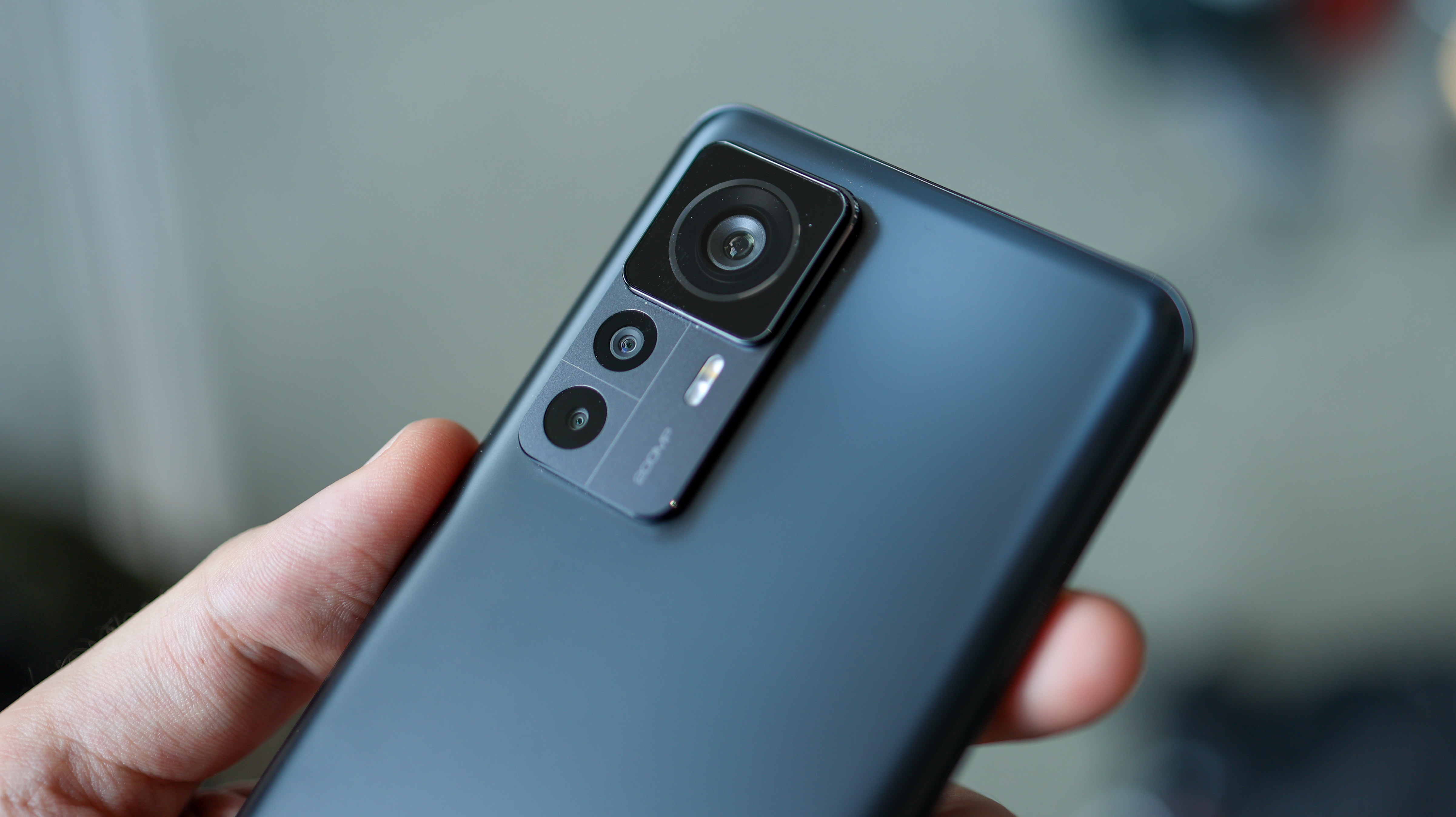
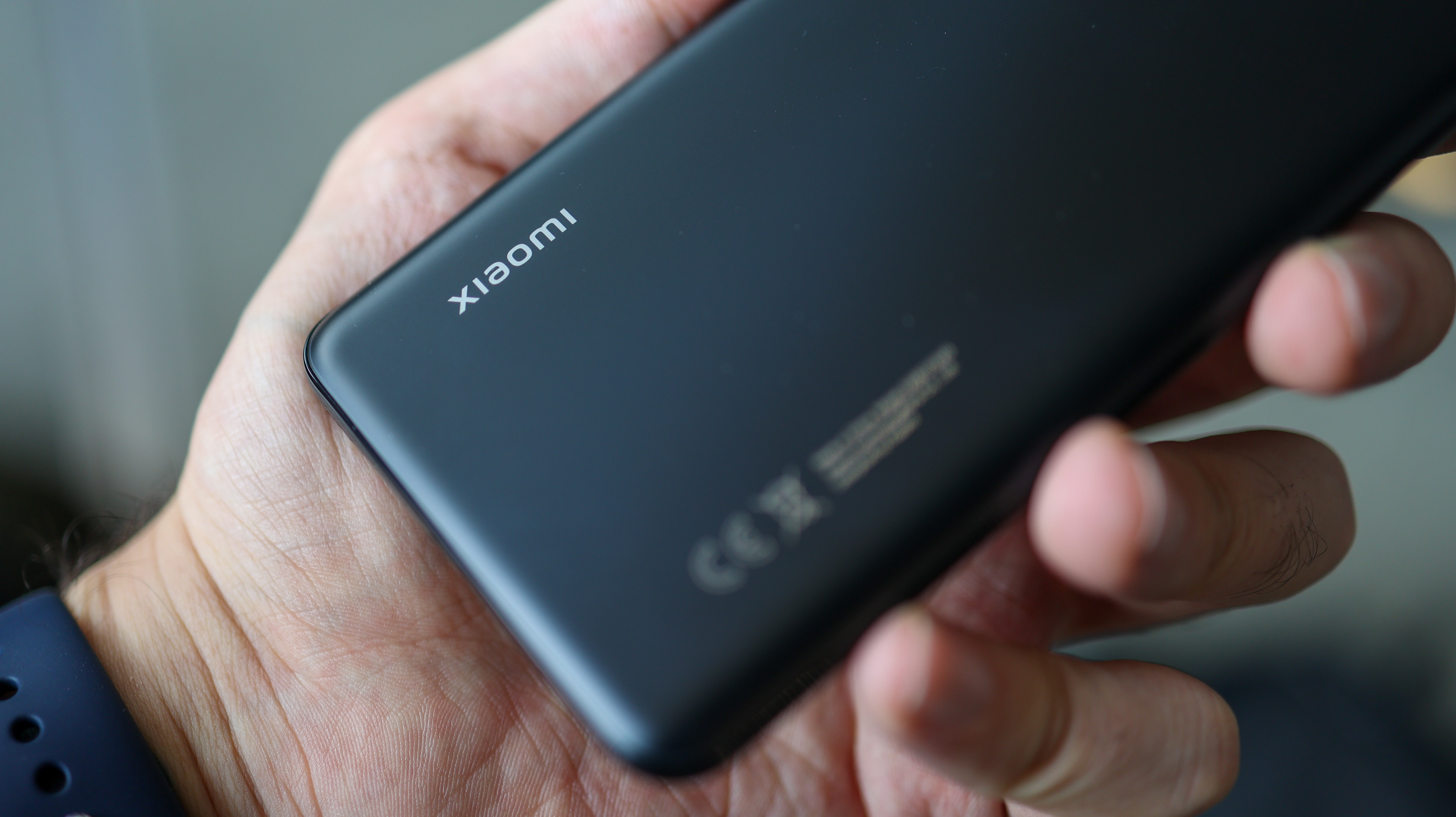
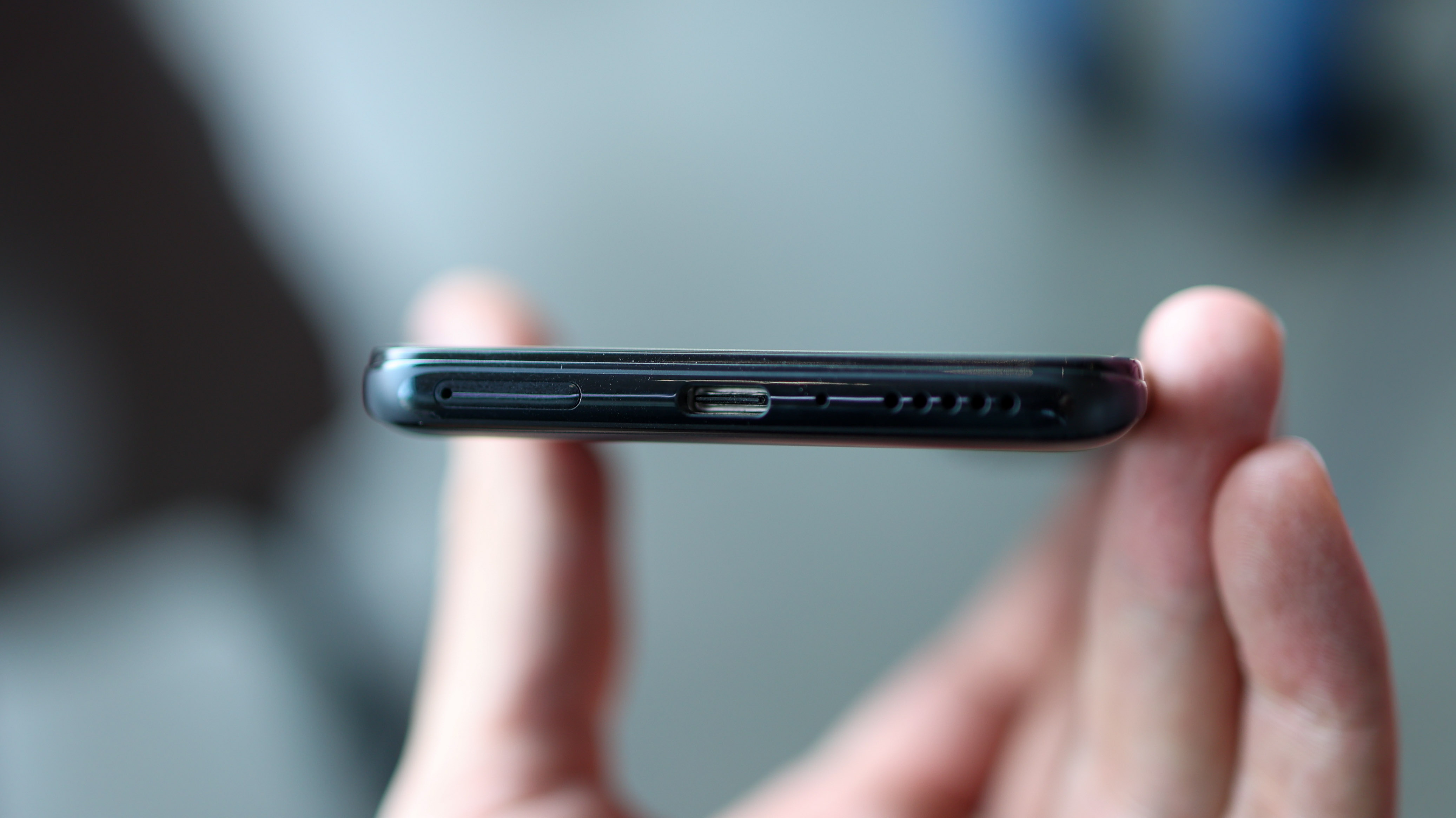
If you got a chance to use the Xiaomi 11T Pro, you'll remember its silvery, polished, almost gunmetal-like finish. It looks fun, but it wasn't particularly refined – something that's changed this time around. The 12T Pro has a curved glass back with a frosted finish that subtly diffuses light and doesn't cling onto fingerprints too readily.
The phone's relatively big with its 6.7-inch screen, and it isn't light at 205g. That said, when compared to the hefty 240g iPhone 14 Pro Max, it's still manageable.
Despite looking like a flagship from the back, when you get the 12T Pro in your hand, you'll notice its plastic frame and flat screen instantly dial back the premium-factor. Set alongside the Motorola Edge 30 Ultra, it's a less refined package – though feels more robust.
At the base of the phone is a USB-C port and a SIM tray, which takes two SIM cards. All the buttons are on the right side, and at the top is an IR blaster. The phone has commanding speaker holes at the top and bottom for that Harmon Kardon-tuned sound, and around the back is a prominent camera bump.
Xiaomi 12T Pro screen
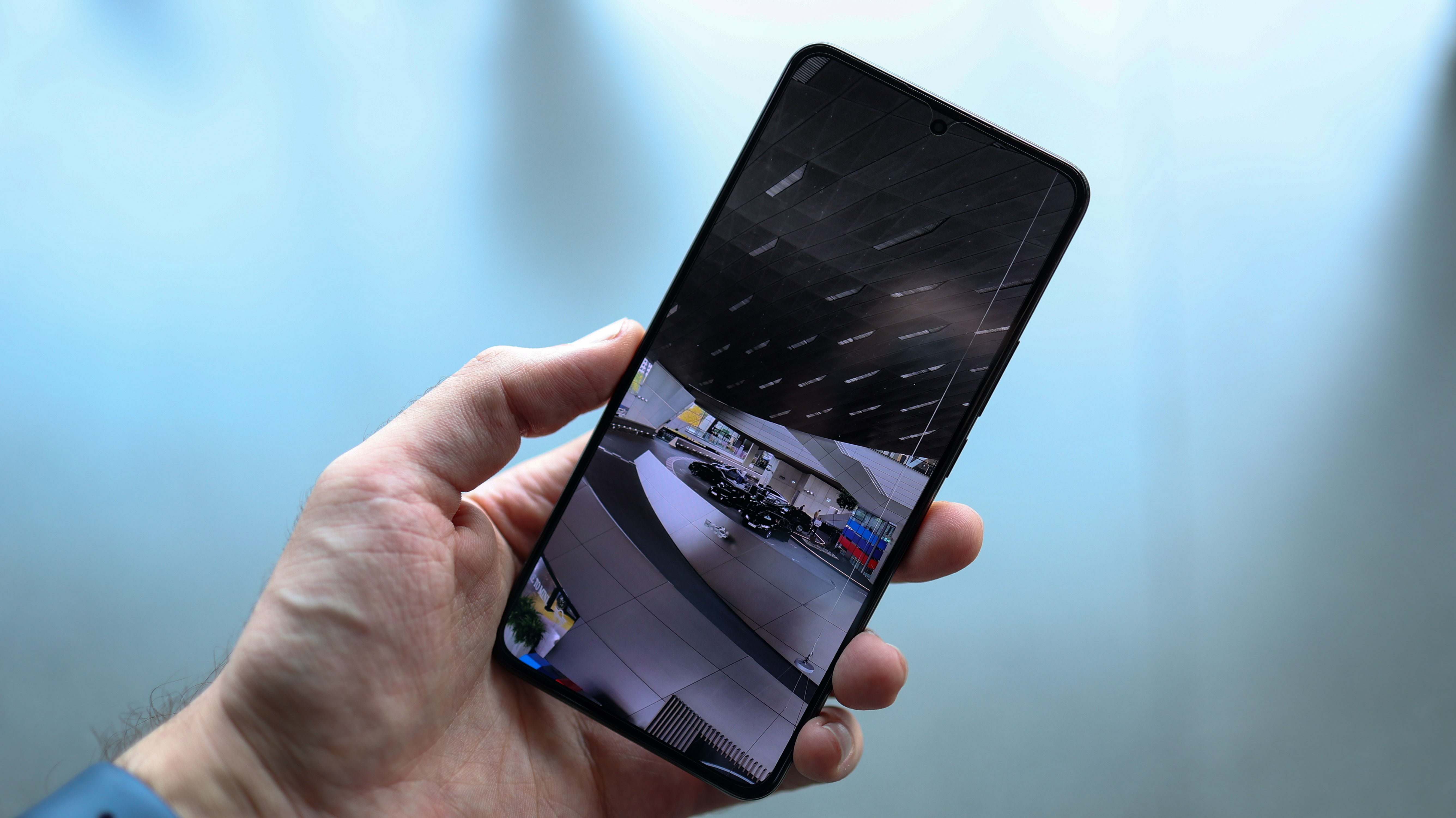
With its 6.7-inch, 20:9 screen, the Xiaomi 12T Pro is a tall handful. It has a punch hole selfie camera in the top center of the display, and there's a pre-fitted screen protector, too, atop a flat Gorilla Glass 5 panel.
Xiaomi doesn't load the 12T Pro up with a generic 120Hz screen. This is an AMOLED Dot Display with an adaptive refresh rate that switches automatically between 30Hz, 60Hz, 90Hz, and 120Hz – promising from a battery-saving point of view. It also benefits from a 480Hz touch sampling rate, so is super-responsive, which should make the 12T Pro ideal for gamers.
If we're underwhelmed by anything about the 12T Pro's screen, it's the brightness. Capping out at 500 nits when setting it manually, and 900 nits in high-brightness mode, it falls behind some of the brightest beamers out there.
With Dolby Vision and HDR10+ credentials, as well as an in-display fingerprint scanner, though, the 12T Pro's display still has some flagship flourishes that help it stand out for the right reasons.
Xiaomi 12T Pro camera
The headline feature of the Xiaomi 12T Pro is its 200MP camera, and it's seriously impressive, both in the flesh and on paper. Measuring 1/1.22 inches, its sensor is physically larger than the new primary sensor on the iPhone 14 Pro Max – which is mighty given the price difference between the two phones.
A large sensor size usually means superior low-light photography and shallower depth of field, and in our short time with the 12T Pro, it definitely delivers on the second count. Its photos of objects captured nearer than 40cm away are loaded with background blur.
Getting into a few more specs, the 12T Pro's main camera sensor is a Samsung ISOCELL HP1 with 0.64-micron pixels. If you speak camera-lingo, that might sound small, but given the huge pixel count of the sensor, it combines 16 pixels into one to create a 2.56μm super pixel, and produces 12MP photos by default.
The main camera's lens has an f/1.69 aperture and features eight elements, shooting with an 85° field of view. More impressive is the fact the 12T Pro's main camera packs OIS, and can record video at up to 8K resolution.
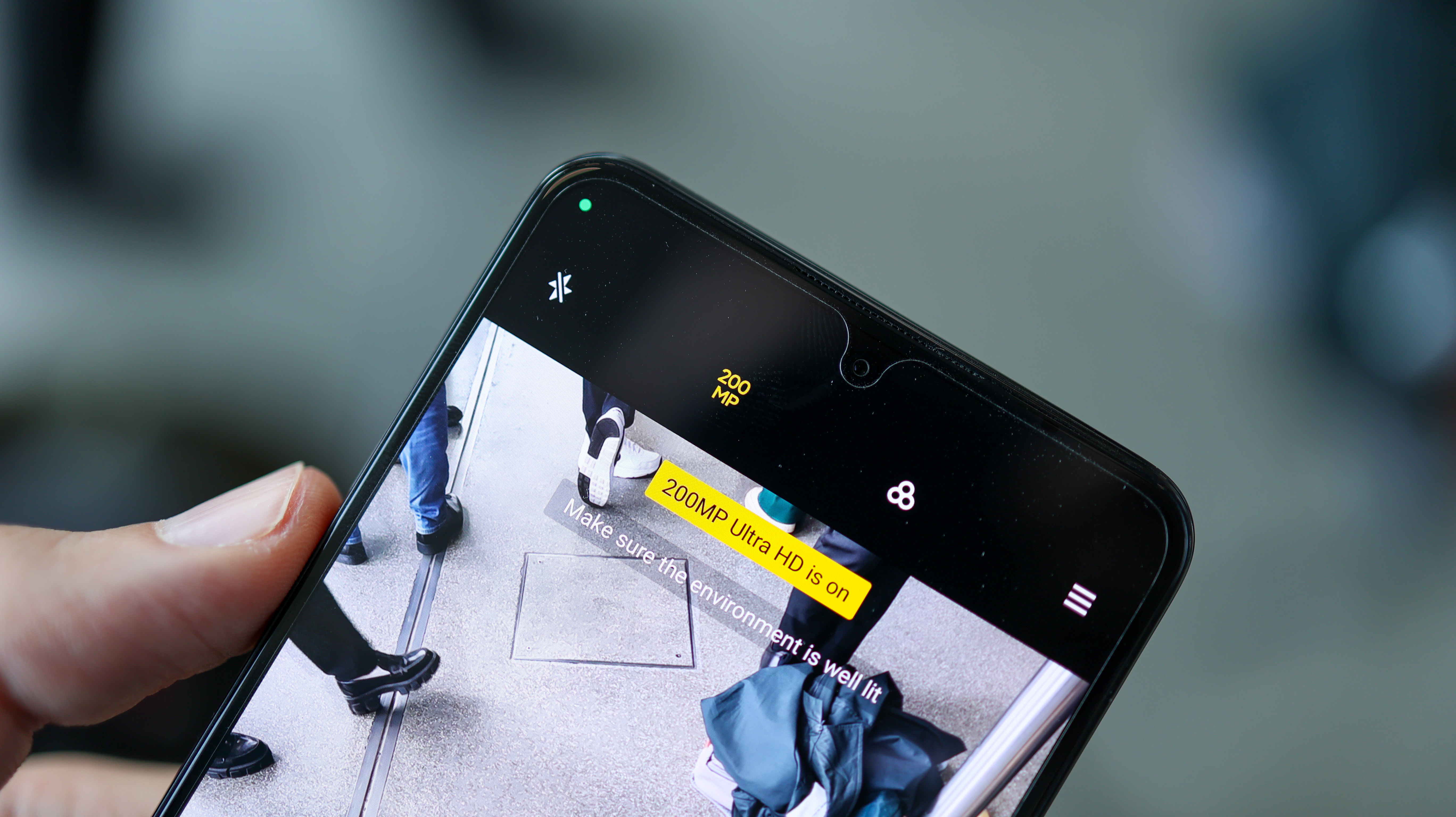
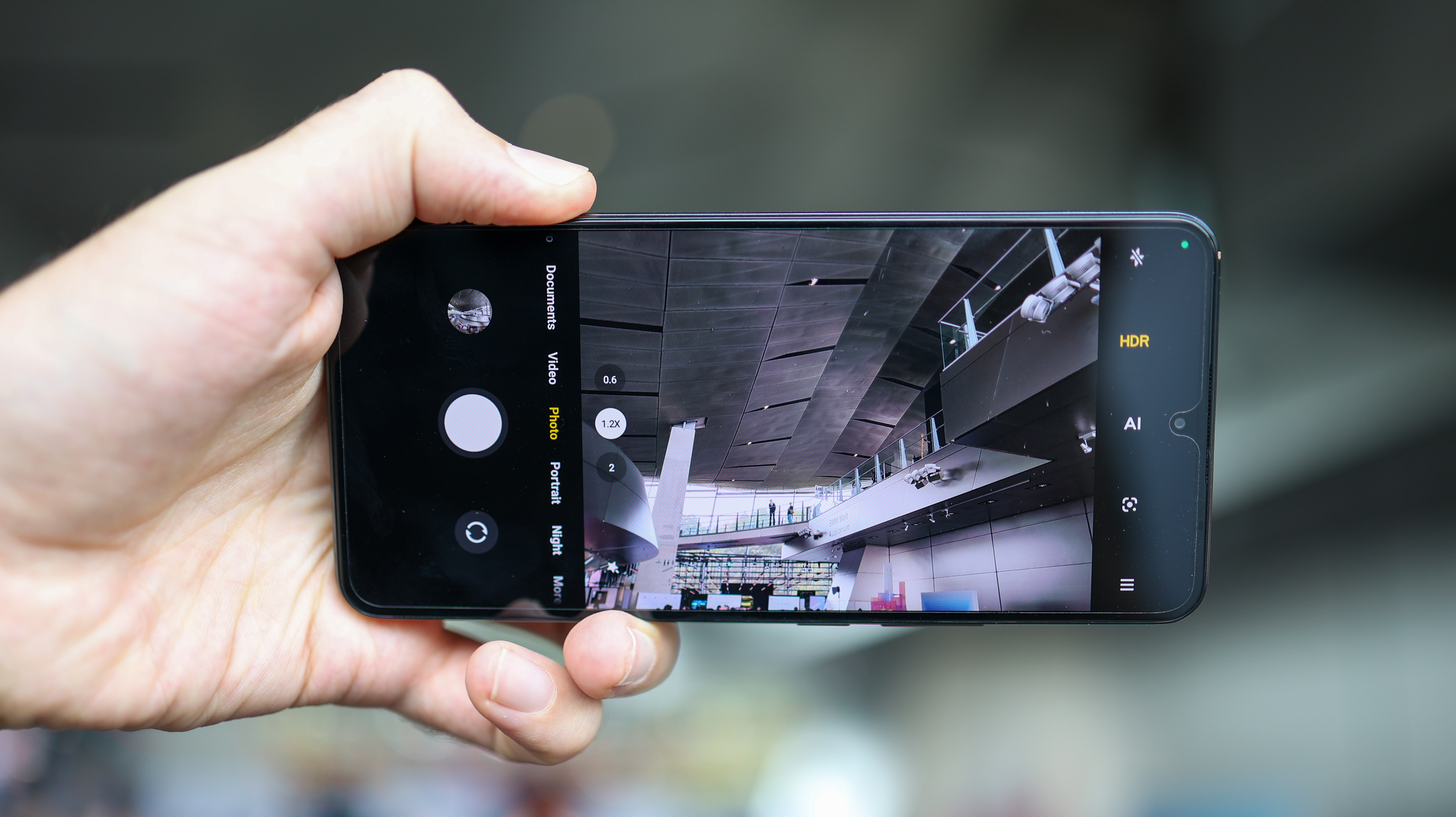
Despite covering the 12T Pro's 200MP primary camera in great detail, the secondary cameras don't warrant such an in-depth overview. The 8MP ultra-wide camera brings nothing new to the table with its small 1/4" sensor size and 120° FOV, and the 2MP macro camera is a poorly specced filler. As for selfies, the 12T packs a 20MP front camera with an f/2.24 aperture.
Xiaomi 12T Pro software
With Android 12 out of the box and Xiaomi's MIUI 13 over the top, anyone who's used a Xiaomi, Redmi, or Poco phone in the last 12 months will know roughly what to expect from the 12T Pro's software.
The fact the phone runs Android means app support is excellent, and you can expect a base level of security from Google. Unlike Huawei phones, the Xiaomi 12T Pro runs with the Google Play Store out of the box, so getting apps onboard is easy.
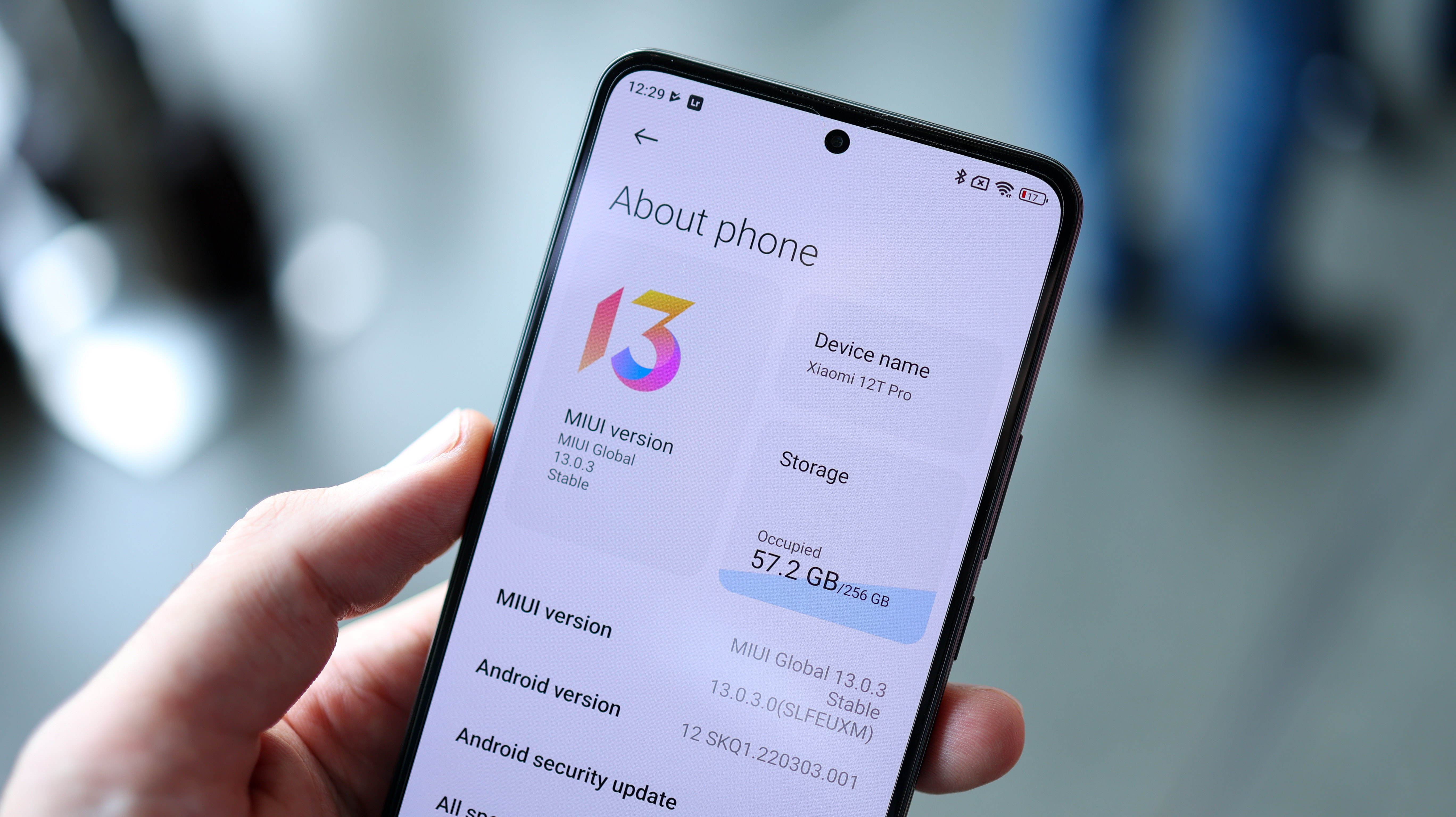
Xiaomi supplements the Android experience with a heavily skinned UI. It borrows some elements from iOS like the Control Centre, and it also adds features to the mix – a virus scanner, for example, every time you install an app.
While it's clear Xiaomi tries to add loads of value in its UI, fans of simpler, stripped-back interfaces will prefer iOS or more stock Android found on Google and Motorola phones. The Xiaomi 12T Pro also runs with a last-gen version of Android, with Android 13 already available on some phones like the Oppo Find X5 Pro.
Xiaomi 12T Pro performance
Along with the high-resolution camera with its big sensor, the Xiaomi 12T Pro's most impressive spec could well be its storage capacity.
The phone ships with 256GB as standard in the UK – loads of space for all your files, photos, games, and more. With 8GB RAM, it should multitask smoothly across apps, too, even with Xiaomi's aggressive battery manager.
Also attention-grabbing is the Qualcomm Snapdragon 8+ Gen 1 chipset powering the 12T Pro. The same processor found in the ROG Phone 6 and 6 Pro, our favorite gaming phone series out now.
With the Snapdragon 8+ Gen 1 performing so much better than the original 8 Gen 1 when it comes to heat management, this could make the 12T Pro the best Xiaomi phone out now for gamers.
Xiaomi 12T Pro battery
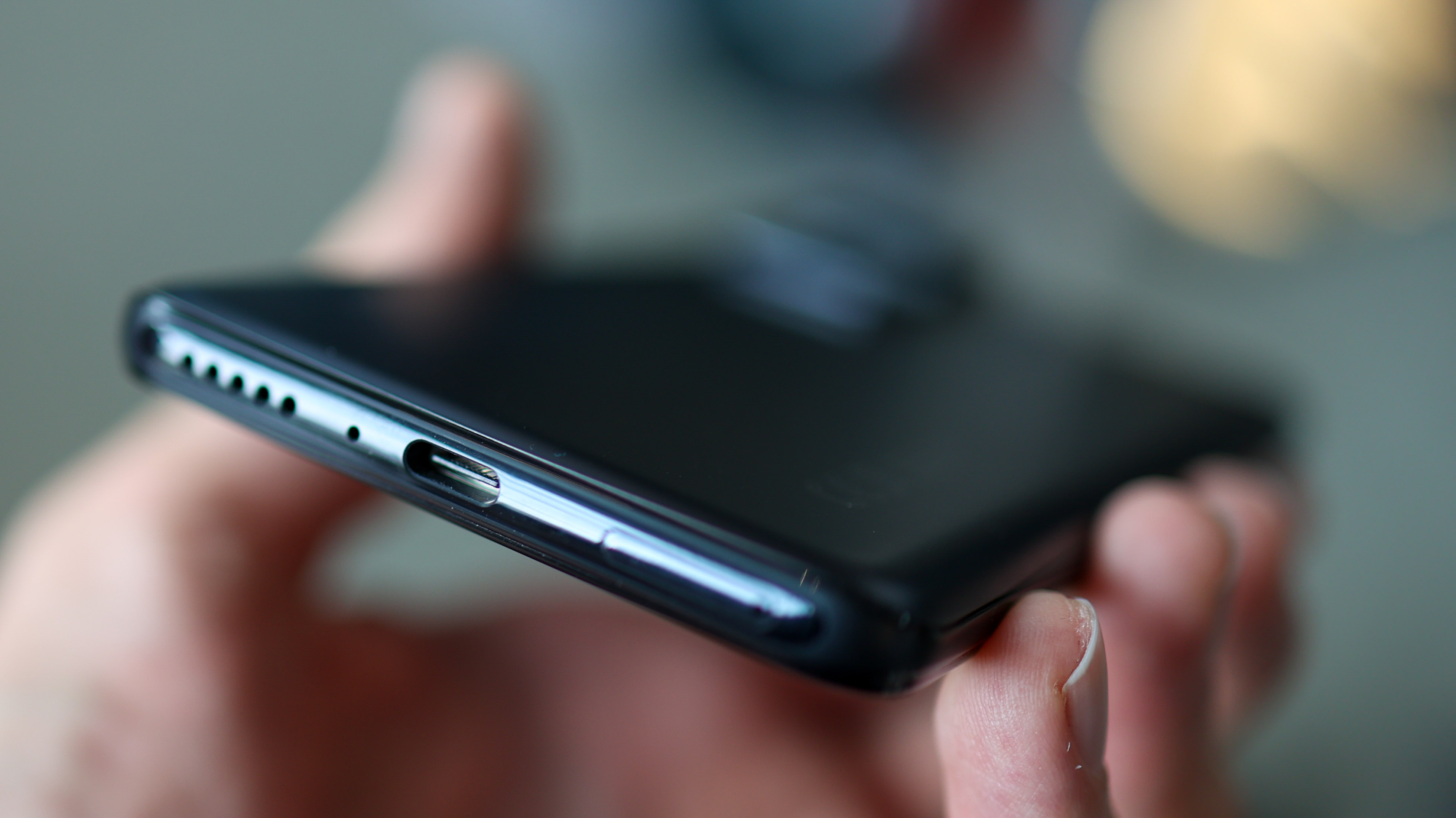
With a 5000mAh battery, the Xiaomi 12T Pro packs a competitive capacity that should ensure it makes it through a full day without any issues, especially with the phone's relatively pared-back screen brightness.
With 120W wired charging, Xiaomi claims you can power up the 12T Pro in as little as 19 minutes, and there's a fast charger in the box too. The only thing missing as far as we're concerned is wireless charging – but if the idea of day-long power and nippy power ups are more important to you, the 12T Pro should still float your boat.
Xiaomi 12T Pro early verdict
On first impression, the Xiaomi 12T Pro is a value champ with its 256GB storage capacity and Qualcomm Snapdragon 8+ Gen 1 power. It isn't cheap, and there are compromises. There's no wireless charging, for example, and the phone's plastic frame and flat-screen aren't as premium as some of the curved glass and metal competition.
It's also worth noting, the phone's camera isn't an across-the-board champion – the ultra-wide and macro cameras are, on paper, mediocre to poor. That said, the 200MP primary camera arguably compensates for any imaging shortcomings. It has a huge sensor size, a sky-high resolution, and on first impression, delivers mighty results.
We reckon the 12T Pro will be a really good, affordable gaming phone for anyone who really loves taking photos. Xiaomi's photo processing is also generally more natural-looking than that of Motorola, so we're optimistic the 12T Pro will indeed be an excellent camera phone too.
0 comments:
Post a Comment